Emily Jones
Advisor: Lancelot Coar
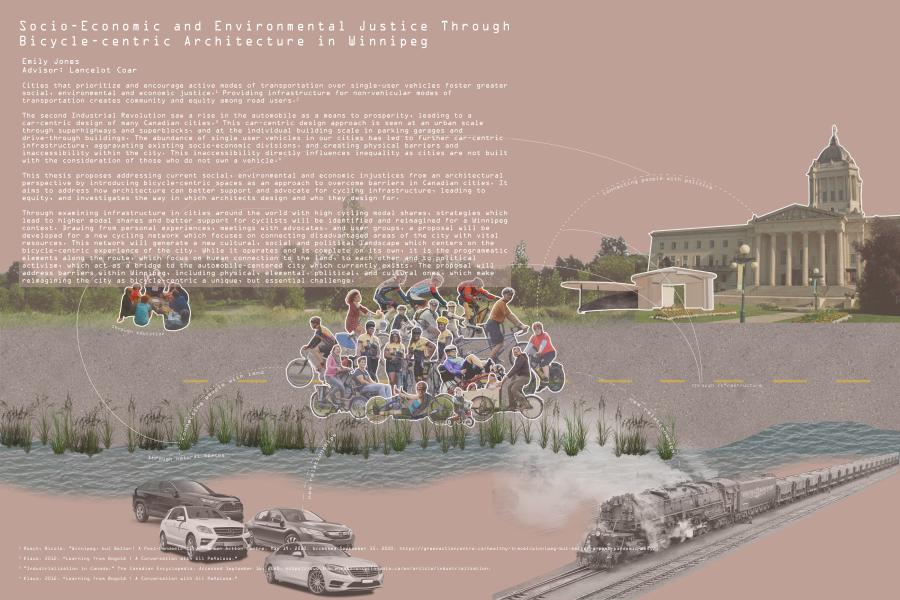

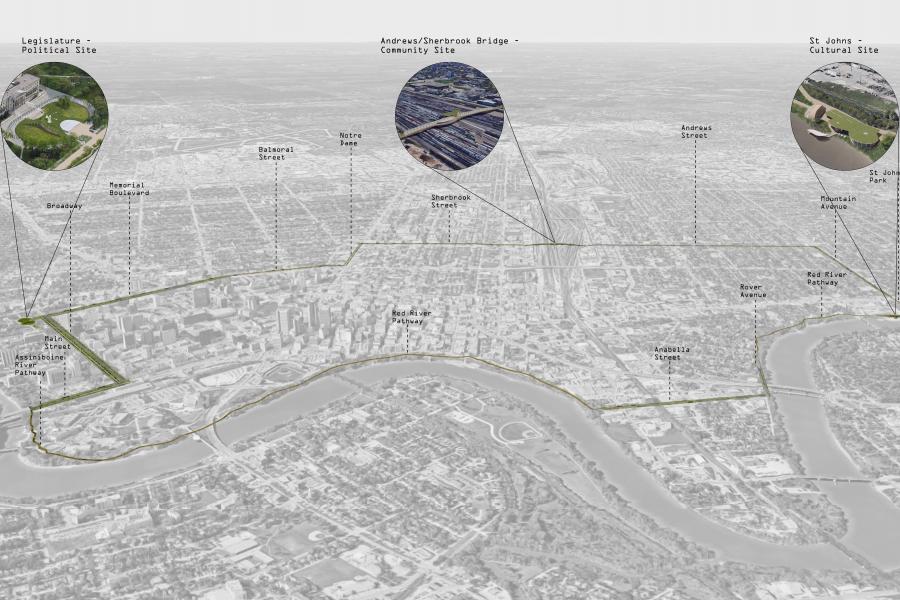
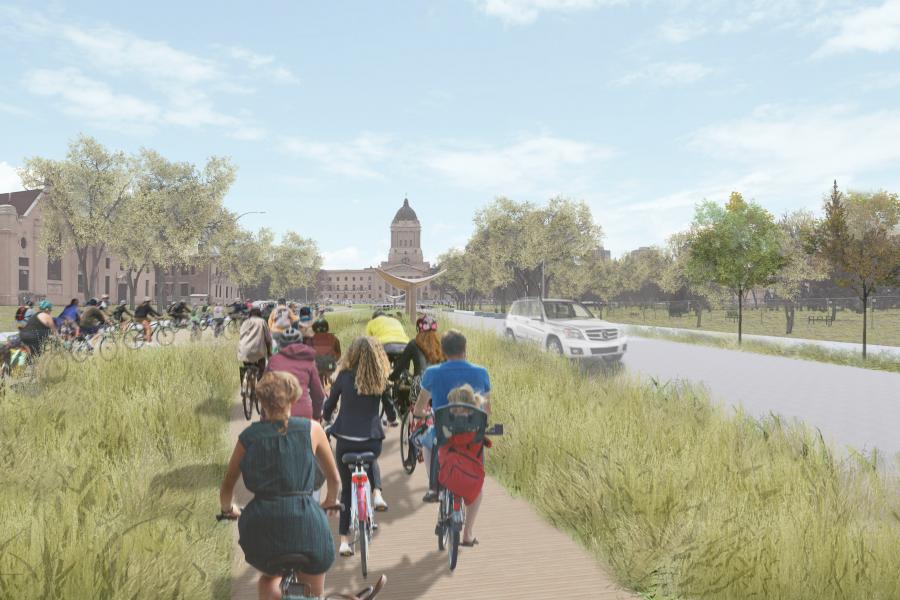
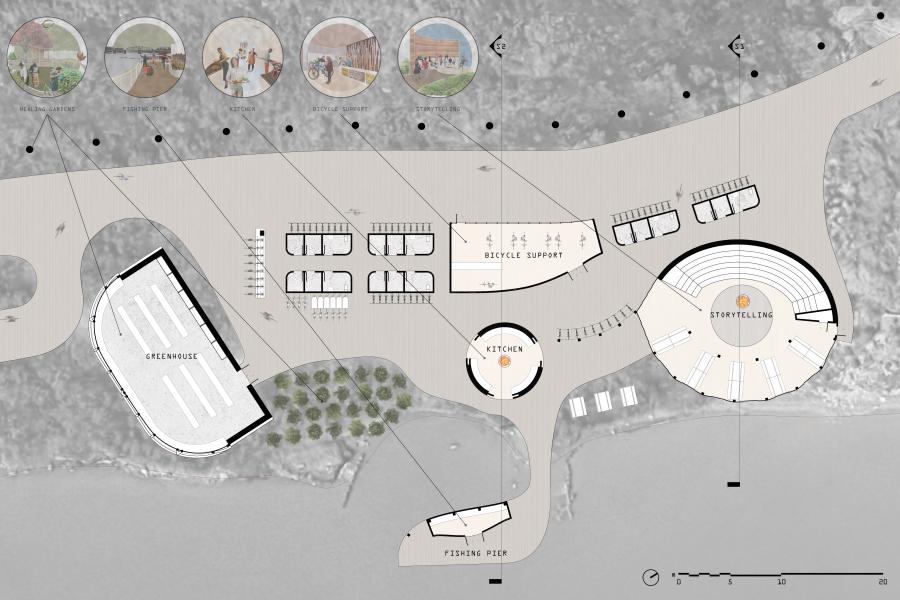
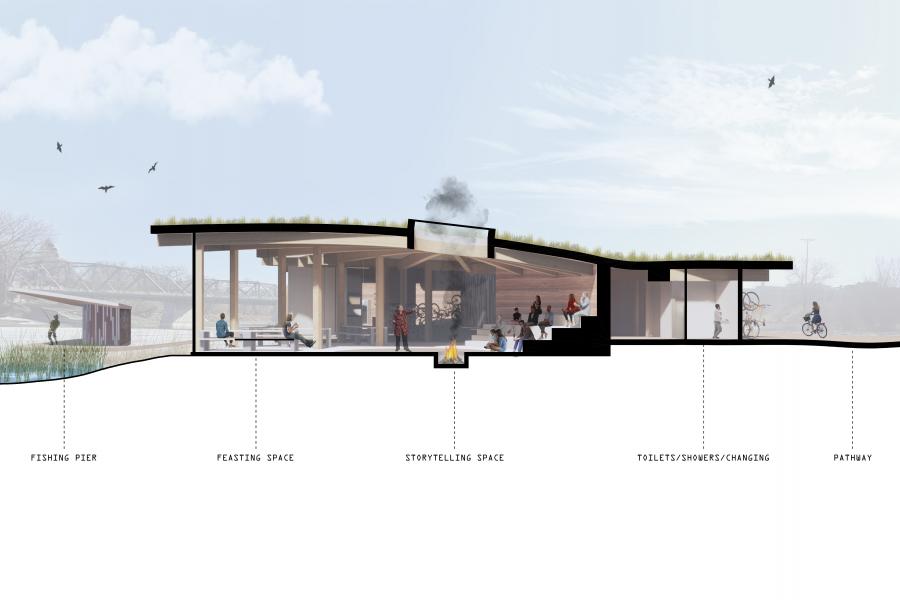
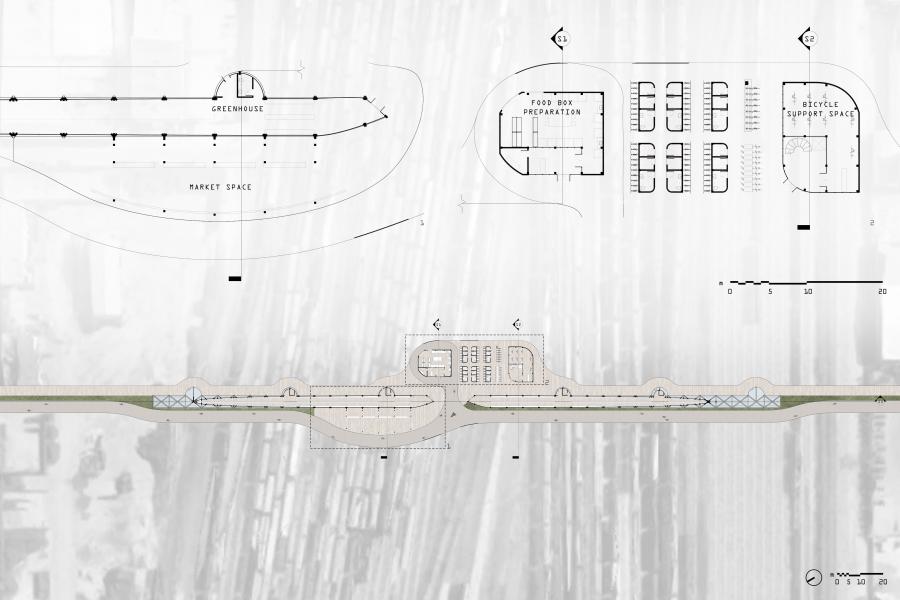
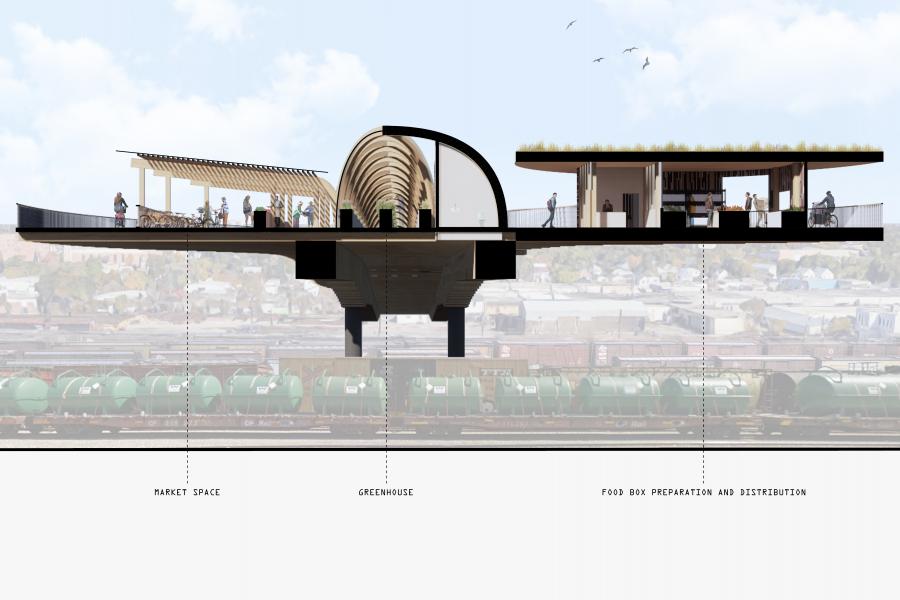

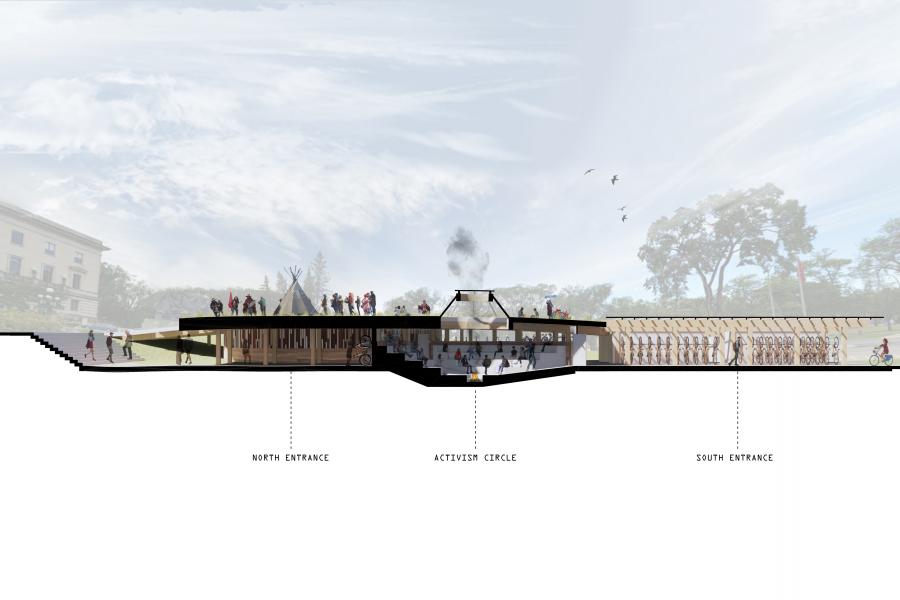
Socio-Economic and Environmental Justice Through Bicycle-centric Architecture in Winnipeg
Cities that prioritize and encourage active modes of transportation over single-user vehicles foster greater social, environmental and economic justice.1 Providing infrastructure for non-vehicular modes of transportation creates community and equity among road users.2
The second Industrial Revolution saw a rise in the automobile as a means to prosperity, leading to a car-centric design of many Canadian cities.3 This car-centric design approach is seen at an urban scale through superhighways and superblocks, and at the individual building scale in parking garages and drive-through buildings. The abundance of single user vehicles in our cities has led to further car-centric infrastructure, aggravating existing socio-economic divisions, and creating physical barriers and inaccessibility within the city. This inaccessibility directly influences inequality as cities are not built with the consideration of those who do not own a vehicle.4
This thesis proposes addressing current social, environmental and economic injustices from an architectural perspective by introducing bicycle-centric spaces as an approach to overcome barriers in Canadian cities. It aims to address how architecture can better support and advocate for cycling infrastructure, leading to equity, and investigates the way in which architects design and who they design for.
The final proposal demonstrates a multifaceted approach to design by investigating how different scales and disciplines can participate in transforming the city of Winnipeg from car-centric to bicycle-centric. This begins at the master planning scale, followed by community planning, landscape and infrastructure design, policy-making and architecture. The project focuses on a new cycling loop which connects disadvantaged areas of the city with vital resources. In creating designs which can be repeated throughout the masterplan, the network generates a new cultural, social and political landscape which centers on the bicycle-centric experience of the city. While it operates and is complete on its own, it is the programmatic elements along the route, which focus on human connection to the land, to each other and to political activism, which act as a bridge to the automobile-centered city which currently exists.
This project calls for architects to step into roles that may be considered outside the scope of traditional architectural practice – city planning, community, landscape, and industrial design and policy-making. By embracing the role of an architect in these spaces, the profession can play a greater role in enacting change in the world.
1 Roach, Nicole. "Winnipeg, but Better: A Post-Pandemic City." Green Action Centre. May 19, 2020. Accessed September 15, 2020. https://greenactioncentre.ca/healthy-travel/winnipeg-but-better-a-post-pandemic-city/.
2 Klaus. 2012. “Learning from Bogotá : A Conversation with Gil Peñalosa.”
3 "Industrialization in Canada." The Canadian Encyclopedia. Accessed September 16, 2020. https://www.thecanadianencyclopedia.ca/en/article/industrialization. 4 Klaus. 2012. “Learning from Bogotá : A Conversation with Gil Peñalosa.”
4 Klaus. 2012. “Learning from Bogotá : A Conversation with Gil Peñalosa.”
